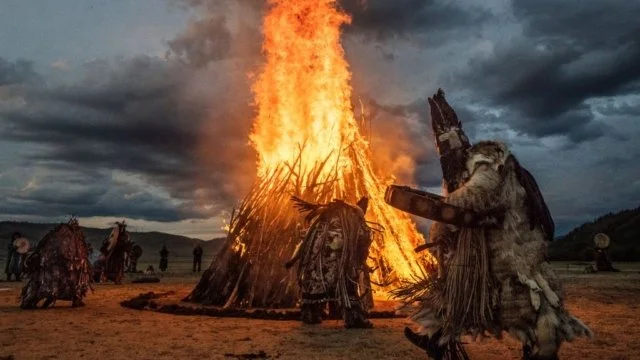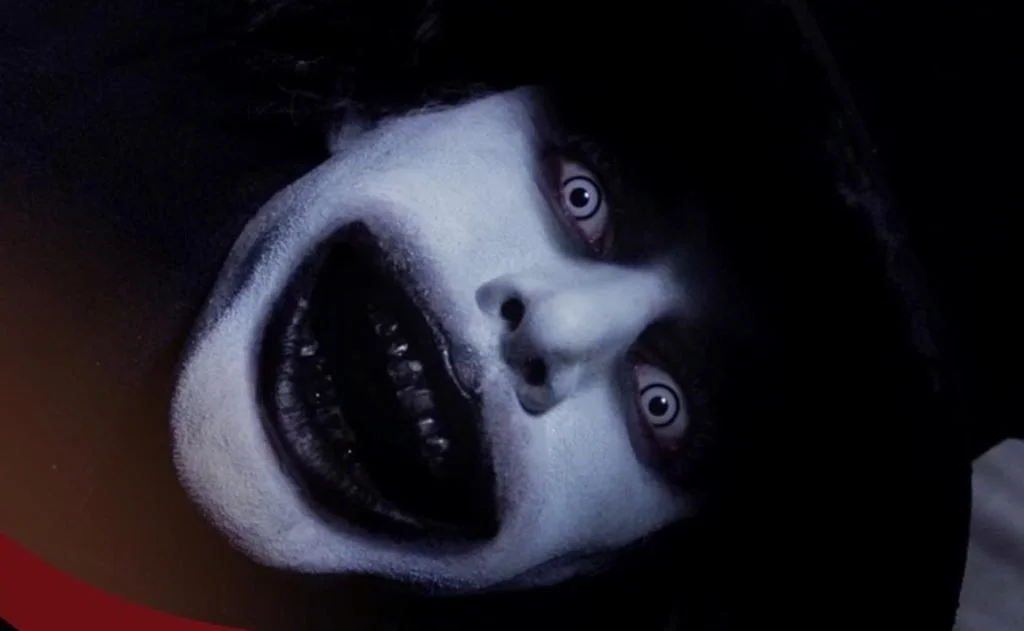What About “Entities”?
A Pragmatic Approach to Psychedelic Experiences of Encounters with “Others”
***
There's one question that inevitably arises towards the end of my 8-week Bad Trip Integration training for therapists. As I outline my working map of the psyche and describe how we can use it to navigate anything a client might encounter during their psychedelic journey, a hand goes up, "WHAT ABOUT ENTITIES?!"
For those unfamiliar with psychedelic phenomenology, an "entity" in this context refers to something that appears to exist outside the person's individual psyche - something they experience themselves encountering or interacting with. It might be an alien, a demon, a deceased relative, a machine elf, a goddess, or any number of "others" that seem to have their own independent existence and agency.
What follows is a discussion of how we might best think about supporting clients who come to us struggling with such “entity” experiences.
***
David and the Demon
I want to tell you about my client David. Not his real name, of course. He came to me three weeks after a particularly difficult ayahuasca journey, still shaking. "There was this thing," he said, eyes darting to the corner of my office as if it might still be there. "Like a dark…demon. It went inside me." His hands moved to his chest, pressing against his sternum. "I can still feel where it entered."
For therapists specialising in bad trip integration, this is where we begin: not with armchair philosophising - theological or metaphysical conjectures about the nature of reality - but with a human being in distress. Our task is not to settle the ontological debate. Our task is to help our client.
That said, in these situations, I believe that a significant portion of our clients’ distress stems from a question they may never explicitly ask, namely: “Was it real?” Because if it was real - if this thing that entered them, haunts them, speaks to them has any kind of objective existence - then the world they knew is gone. The safe, bounded universe they'd inhabited for forty-three years has become something else entirely: porous, haunted, unsafe in ways they'd never imagined possible.
Psychedelic casualty clients regularly describe encounters with entities during psychedelic experiences - goblins, aliens, divine mothers, shadow beings, deceased relatives, machine elves. They arrive at my door carrying these impossible experiences like strange and scary secret packages that they don't know where to put. And always, beneath the content, there's that deeper wobble: What does this mean about reality? About my sanity?
Philosophy Can Wait
Here's what I've learned over the last 13 years: the question "Are entities real?" is not a very useful question for our work. It's like asking whether love is real while someone bleeds from a broken heart. The philosophy can wait. The suffering cannot.
In my trainings and supervision of therapists in bad trip integration, I've become familiar with a particular discomfort that arises at this juncture. Who are we to challenge someone's interpretation of reality? Who are we to suggest that their entity encounter might be something other than what they believe it to be? Isn't this imposing our worldview onto their spiritual experience? These are valid concerns, and I've watched many well-meaning therapists become paralyzed by them, offering only passive validation while their client continues to suffer.
But here's the thing: when someone seeks us out in distress after a challenging psychedelic experience, they're not coming for theological validation. They're coming because they're struggling. And it's precisely this struggle - this distress - that gives me permission to work with them on the meaning of their experience. When someone encounters a benevolent entity that leaves them feeling blessed or expanded, there's often little for me to do beyond witnessing and perhaps helping them integrate the gifts. But when they arrive terrified, when they can't sleep, when they're checking corners for demons - that's when the real work begins. Their distress is my mandate to help them find a new way to hold what happened.
When the Container Dissolves
Most of my clients have been raised in what we might call the Western consensus reality - a worldview where minds are internal, private, boundaried. Where thoughts may well correspond to neural firings, but not to spirit possession. Where the self is a container, not a colander. This notion of a separate bounded self is the water we swim in, so fundamental we rarely notice it's there.
Until psychedelics dissolve the container.
Suddenly, David finds himself in a reality where boundaries are suggestions, where something that is decidedly not-him can enter his body, take up residence, make demands. The terror isn't just about the entity itself - it's about the shattering of his fundamental assumptions about how reality works. It's ontological vertigo of the highest order.
Beginning in childhood we are implicitly encouraged to trust in the firmness of boundaries - between self and world, between real and imaginary, between inside and outside. Formal education reinforces this architecture of separation. We learn to navigate by maps that show clear borders, solid lines. Then comes an experience that suggests those lines were only ever suggestions, and the disorientation can be profound.
Two Maps: Shamanic and Psychological
To understand how we might work with entity encounters, it's helpful to consider the notion of paradigms - those internally coherent frameworks of understanding that shape how we make sense of phenomena. Think of how Newton's physics and Einstein's both explain planetary movement yet operate from fundamentally different premises. Both are internally coherent, and both have explanatory power. Importantly however, we need to work with one or the other, as importing concepts and elements from one into the other would create chaos.
In working with entity encounters, I've come to recognize two broad paradigms that offer radically different maps of this territory. And here's what I've learned: much of my clients' confusion and distress stems from unknowingly mixing these paradigms - trying to hold both maps simultaneously without realizing they're doing it. Part of our therapeutic work, then, is to name these frameworks clearly and help clients land on a coherent understanding that restores their sense of safety and agency.
So what are these two paradigms?
The first is ancient, common to most human cultures throughout history. Call it the Shamanic Paradigm, though I use this term with reservation, recognizing that it's an imperfect label that flattens myriad distinct traditions. Still, it serves as useful shorthand for worldviews where entities are understood as independent agencies. In this view, the world is full of spirits, ancestors, forces that exist independently of human consciousness. The self is porous, permeable. Things can enter and exit. Healing happens through negotiation with these forces, through ritual, through the intervention of those who know the territory.
The second is newer, perhaps only a few centuries old in its current form, though its roots reach back through Descartes and the Enlightenment - and further still, to classical and medieval notions of the soul. It was most notably consolidated in the work of Freud. This is the Psychological Paradigm. Here, the self is dynamic but contained, and all of its content is ours. Perhaps that demon is disowned rage, that goddess the personification of compassion, that alien the utterly foreign feeling of our own deepest nature. In this paradigm, healing happens through integration, through dialogue between parts, through making conscious what was unconscious.
The Question of Empowerment
Here's something crucial: the question of which framework we use isn't just philosophical - it's about where we locate power and agency. In traditional cultures with intact shamanic containers, the shamanic model can be profoundly empowering. The community holds the cosmology, the shaman knows the protocols, the person is supported through established rituals. There's a shared understanding of what's happening and what to do about it.
But drop that same external model into a Western context, and watch what happens. David believes a demon has possessed him. Now what? He needs to find a shaman - but which tradition? Who's legitimate? How often must he return for "cleansing"? The power to heal lies perpetually outside himself, with some specialist who may or may not be trustworthy, whose worldview may or may not integrate with the rest of his life.
Meanwhile, Monday morning comes and David has to go to the office. How does he explain to his colleagues why he needs time off for an exorcism? The shamanic model, so coherent within its own cultural frame, becomes a source of isolation and ongoing dependence when transplanted into our secular, individualist context.
The “internal” psychological model, by contrast, returns the locus of control to David. The “demon” becomes a part of himself he can learn to understand, dialogue with, and integrate. He doesn’t need a specialist to repeatedly remove it for him; he needs a guide who can help him develop the capacity to work with this aspect of his own psyche. In time, that relationship becomes self-sustaining. This isn’t just practically easier; it’s fundamentally more empowering within the cultural context he actually inhabits.
From Theory to Practice
In practice, I've found that most psychedelic casualty clients need help translating their experience from the external map to the internal one. Not because the internal map is ultimately more true - I'm not making metaphysical claims here - but because it's the map they've been using their whole lives, even if they've recently become curious about shamanic frameworks.
Let me acknowledge my own position here: I'm trained in Western psychotherapy, transpersonal psychology, non-ordinary states, ceremony, parts work, Jungian ideas, and somatic approaches. My own deep attraction to shamanic frameworks has led me to spend much of my professional life exploring what might be called “underworld” terrain. Over the years, I've crafted my own methodology for working with entities and have trained hundreds of therapists in bad trip integration.
But despite this extensive exploration, I've never indulged the fantasy that I can wholesale abandon my Western psychological paradigm in my work as a therapist - to do so would be to depart from the consensus reality of my clients and colleagues. Nor do I have the cultural authority to perform what might be called authentic shamanic healing. Frankly, I'm skeptical that any practitioners living in Australian cities do, at least not in any deep, culturally rooted sense.
But more to the point: for a client embedded in Western culture, the psychological paradigm is a far more empowering approach. It locates the power to recover and heal within the self, fosters independence rather than dependency, and integrates naturally with the life our clients actually live. This is the framework I work within - not as a limitation, but as a deliberate therapeutic choice born from years of exploring the territory through both paradigms.
A Phenomenological Focus
So with David, I didn't say, 'That wasn't real.' Instead, I adopted what we might call a phenomenological stance - focusing on the lived, embodied qualities of his experience rather than its ultimate ontological status. (While it's beyond the scope of this essay to detail what working phenomenologically entails, I explore this methodology extensively in my trainings and forthcoming book. Here I'll simply say that it allows us to work with the fullness of the experience without having to settle metaphysical questions.) 'That sounds absolutely terrifying,' I say. 'Where did you feel it enter your body?”
We stay with the sensation, the felt sense. This is crucial: by working phenomenologically, I'm not denying his experience or imposing a belief system. I'm simply exploring what happened in terms we can both work with - the language of feeling, sensation, and personal meaning.
Over multiple sessions, David’s relationship to the Demon shifts. He turns toward it, feeling less fear. And while its qualities persist - burning, destructive, foreign - he now has space for curiosity. At first it morphs into a volcano. And then eventually he recognizes it as his own. We come to understand that what he had encountered was a rage he’d sent underground at the age of three, when “a new guy shacked up with my mum, and dad disappeared”. This gave rise to an anger it wasn’t safe to express or even feel - anger he'd intuited was dangerous, unacceptable, literally “demonized”. "Oh wow," he said, tears flowing. "It's little me. Like a toddler raging, having a tantrum.
This wasn't a reduction of his experience. It was a restoration of agency. The demon transformed from external invader to exiled part seeking recognition. David's fear dissolved into curiosity, then compassion. Integration became possible. He could show up to work on Monday without needing to explain why he'd seen an exorcist over the weekend.
Staying Grounded
Psychedelic Casualty clients today arrive having been exposed to multiple frameworks through psychedelic communities, New Age spirituality, and internet forums. They might simultaneously believe entities are real spirits AND psychological projections, leaving them stuck between worlds. But here's what I've found: when I hold my own framework with absolute clarity - psychological paradigm as my map, phenomenological approach as my method - it creates an anchor point for the work regardless of what cosmologies they're juggling.
Sometimes I'll make this explicit: "I can't confirm or deny what's ultimately real - neither of us can. But what we can do is slow down and pay really close attention to what happened. What we're dealing with now is here in the room with us - it's in your mind and body. That's what we can work with, have a relationship with, and find a way to integrate." This consistent stance gives their psyche space to sort through the confusion without me adding to it.
Beyond Personal Biography
Not every entity encounter stems from personal unconscious material like David's childhood rage. I've worked with clients who meet vast intelligences, archetypal forces, something Jung might have called the collective unconscious - experiences that seem to transcend individual biography. Our psyches are deeper and more mysterious than we often imagine. Yet regardless of the source, I've observed something consistent: fear is the crucial element.
When it comes to the question of entities, one prominent voice is Bob Falconer, author of “The Others Within Us: Internal Family Systems, Porous Mind, and Spirit Possession”. Falconer - from whom I've received both therapy and supervision - argues that entities are genuinely real, independent beings that can affect us. The heart of his work is engaging directly with this metaphysical question. I don't share his position, and more importantly, I don't think settling the metaphysical question is necessary or even helpful for therapeutic work.
As far as I can tell, what Falconer and I do agree on is that when clients find their way beyond fear, the entity's power - however we conceive of it - diminishes. This isn't any sort of spiritual bypassing - it's recognizing that in the geography of consciousness, it is fear that gives these experiences their traumatic charge and power. When clients can find their ground, their center, their own authority, they are never in danger or harmed by the encounter.
Here's my provocative thought: if not being afraid of something renders it powerless, perhaps that itself has metaphysical implications. If we truly are "masters in our own house", when we remember it's our house, what does that suggest about the nature of these encounters? I'll leave that question hanging.
Without Cultural Guardrails
There's something crucial missing from our modern encounter with these experiences. Traditional cultures have collective wisdom and shared frameworks for supporting those who have peak-experience or other non-ordinary state encounters - guardrails that keep individuals from getting lost in their own cosmic drama. A Zen master tells the student claiming enlightenment to go clean the toilets. A rabbi-in-training tells his teacher he dreamed he would become a great rabbi, and the teacher laughs: "Come back when a hundred others have had the same dream." An indigenous elder reminds the young visionary that one person's vision means nothing until it serves the community.
We've lost these containers. We've privatized the mystical, made it another consumer experience. Then we're surprised when people get lost in their own cosmic drama, unable to distinguish personal shadow from universal truth.
The Pragmatic Mystery
I hope it’s clear by now that I don't claim to ultimately know what entities are. After years of sitting with people who've had these experiences, holding space for the “impossible”, I've made peace with not knowing. Maybe consciousness is more porous than we think. Maybe deities are more than personifications of our own glorious depths. Maybe the boundaries between inner and outer, self and other, are more provisional than our culture assumes.
What I do know is this: when someone comes to me shaking from an encounter with the abyss, or a malicious entity, my job isn't to adjudicate reality. It's to help them find a way of holding their experience that allows them to keep living, keep growing, and keep participating in the shared human project.
David's doing well now, by the way. He dialogued with the Demon, took up long distance running to defuse the volcano, and took the toddler under his wing.
Trusting Your Wild Mind
Coming to the end of this essay I recognize once again why I am so drawn to working with Psychedelic Casualties. It is the very reason I founded Wild Mind Institute over ten years ago. For me, the takeaway from these entity encounters is that consciousness itself is vaster, stranger, more multiple than we dared imagine. The question isn't whether entities are real. The question is whether we're brave enough to meet everything that arises in our wild minds - inner or outer, self or other - with curiosity instead of fear.
That's the real work. Everything else is just philosophy.







